Background:
A while back I worked with Stratified Automotive Controls to make an E30 tune for my GTI. To find out the gains from the E30 tune over a 93-octane tune I took the GTI to a Dynojet dynamometer.

The 93-octane tune results were discussed in this previous post.
Test Procedure:
The GTI is secured to a Dynojet dynamometer.
Measurements are taken with the GTI operating in the fourth (4th) gear. The 93 octane tune is measured first and then E85 fuel is added to the fuel tank to bring the ethanol content up from the pump value of 10% to 30%, which this tune is designed for.
The GTI was idled on the dyno until the desired mixture percentage is read using an ethanol content analyzer. This took approximately 15 minutes which is noticeably longer than when I switch fuel mixtures at a gas station and immediately drive the GTI on the street.
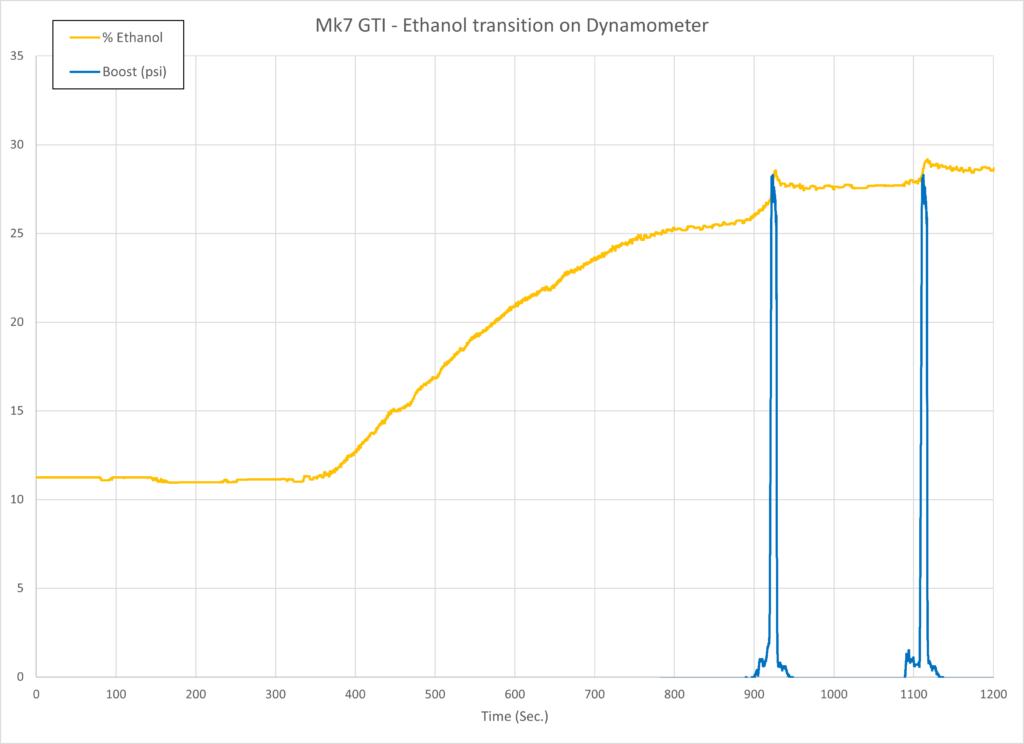
Test Results:
Two pulls are shown on the chart below with an SAE correction factor applied.
Note: The environmental conditions were very close to the standard atmosphere values that the SAE corrects to, such that the uncorrected values are within 0.6 WHP of the SAE corrected values.
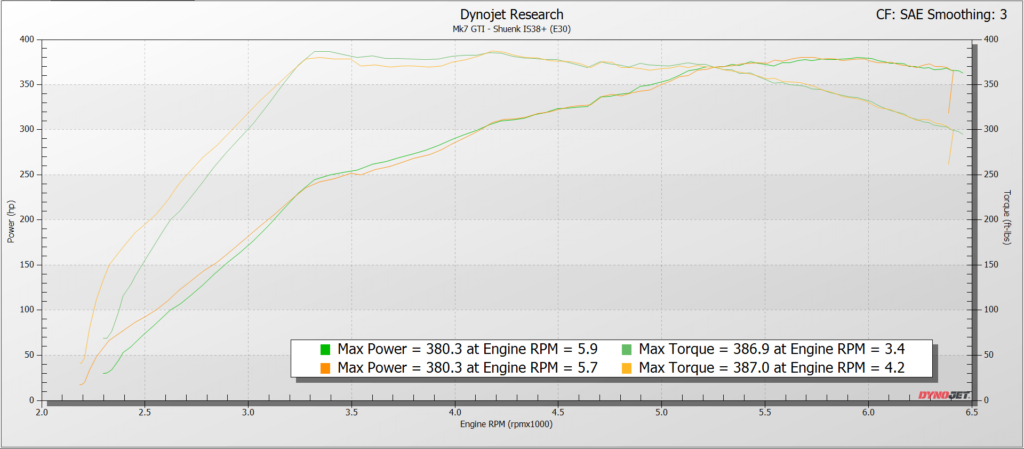
The next chart shows the boost and wastegate duty cycle for the E30 tune (dashed lines) and the 93-octane tune (solid lines).
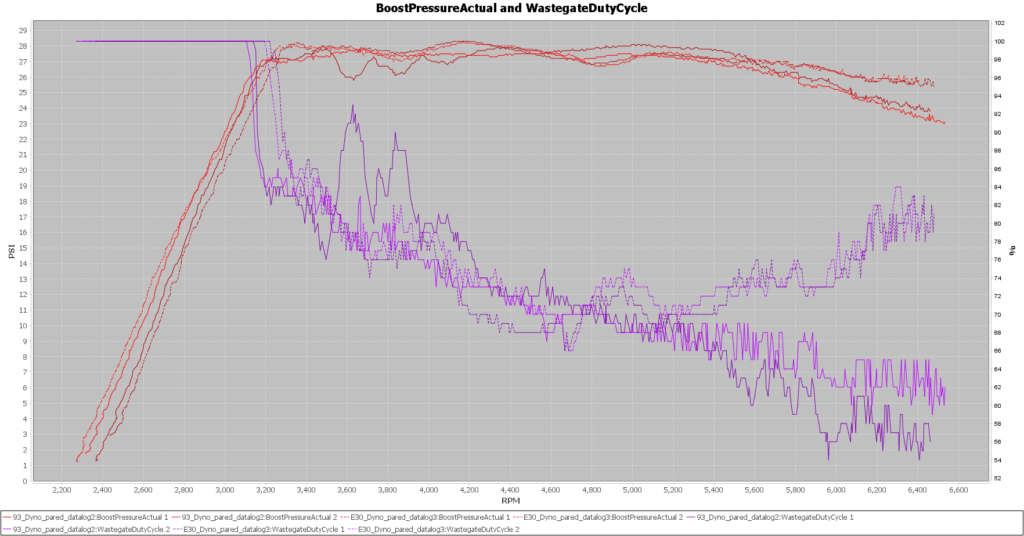
The E30 operates at a couple of psi more boost pressure which produces a dramatic increase in the wastegate duty cycle near the redline for this IS38+ turbocharger.
The next chart shows a comparison of the timing advance for the E30 and 93-octane tunes. Unsurprisingly, the E30 tune operates with more timing advance.

The next chart is of air temperatures. Interestingly, at the peak, the compressor outlet temperature approaches 400 degF.
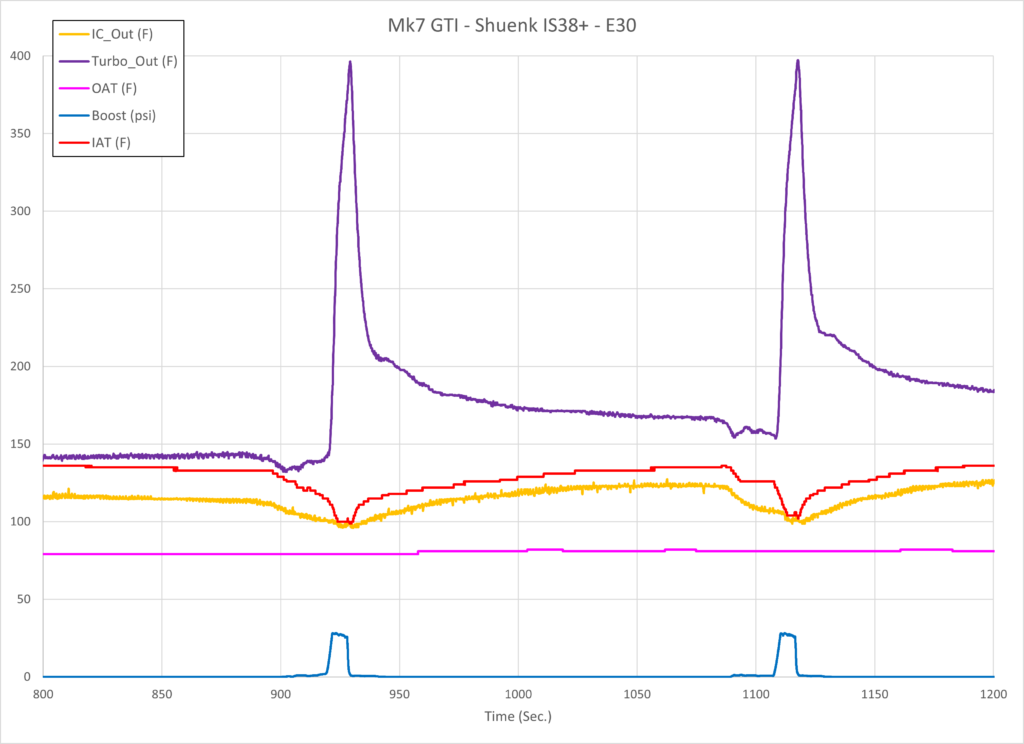
The final chart compares the engine power and torque output using the E30 tune (orange & green) with that from the 93-octane tune (blue & red).
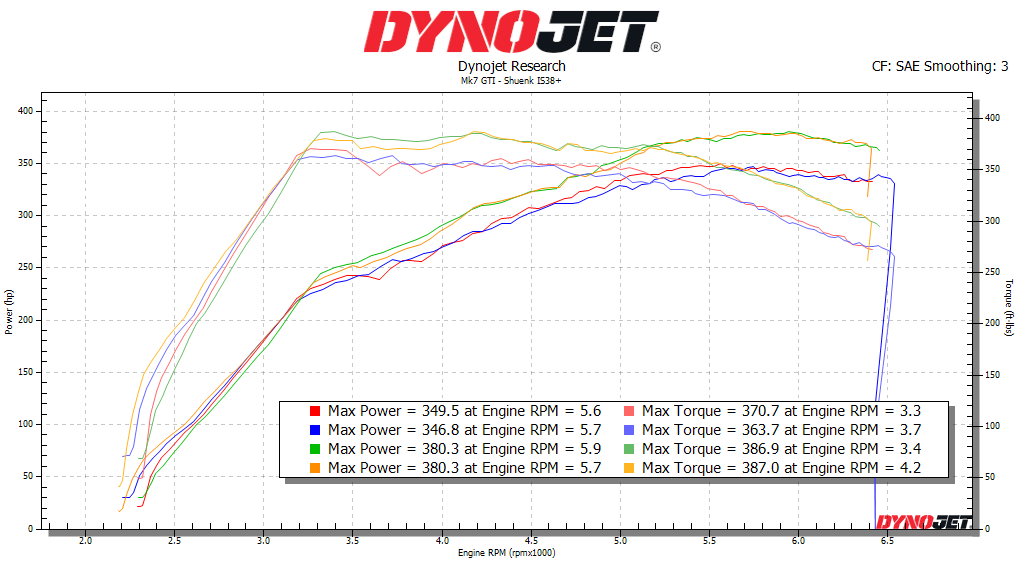
Peak values from the E30 tune are shown in the table below:
| Run | WHP | WTQ |
|---|---|---|
| 1 | 380.3 | 386.9 |
| 2 | 380.3 | 387.0 |
Conclusions:
The GTI was dyno’d using an E30 ethanol mixture to measure the differences between the E30 and previously measured 93-octane gasoline tune.
With the E30 tune the peak whp was increased by approximately 30 whp and the peak wtq was increased by approximately 20 wtq.
